- Details
- Other
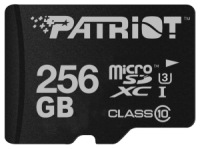 CDRLabs has put together a brief review of Patriot's new 256GB LX Series microSDXC memory card. Equipped with the latest 3D NAND technology, this dime-sized card gives smartphone, drone and action camera users the capacity they need to capture hours of 4K Ultra HD video and thousands of high-resolution images. The 256GB LX Series microSDXC card is also Class 10, U3 qualified, allowing for sequential speeds of up to 90MB/s read and up to 80MB/s write for the quick capture of images and speedy transfer of data from camera to computer.
CDRLabs has put together a brief review of Patriot's new 256GB LX Series microSDXC memory card. Equipped with the latest 3D NAND technology, this dime-sized card gives smartphone, drone and action camera users the capacity they need to capture hours of 4K Ultra HD video and thousands of high-resolution images. The 256GB LX Series microSDXC card is also Class 10, U3 qualified, allowing for sequential speeds of up to 90MB/s read and up to 80MB/s write for the quick capture of images and speedy transfer of data from camera to computer.
- Details
- HDD/SSD
 CDRLabs kicks off the New Year with a review of Samsung's 960 PRO SSD. First unveiled at the 2016 Samsung SSD Global Summit in Seoul, this cutting-edge NVMe SSD is powered by the company's new 5-core Polaris controller and is available with up to 2TB of their 48-layer V-NAND flash. Also, thanks to its PCIe Gen 3.0 x4 lane interface, the 960 PRO is capable of delivering up to 3,500 MB/s sequential read and 2,100 MB/s sequential write speeds.
CDRLabs kicks off the New Year with a review of Samsung's 960 PRO SSD. First unveiled at the 2016 Samsung SSD Global Summit in Seoul, this cutting-edge NVMe SSD is powered by the company's new 5-core Polaris controller and is available with up to 2TB of their 48-layer V-NAND flash. Also, thanks to its PCIe Gen 3.0 x4 lane interface, the 960 PRO is capable of delivering up to 3,500 MB/s sequential read and 2,100 MB/s sequential write speeds.
- Details
- HDD/SSD
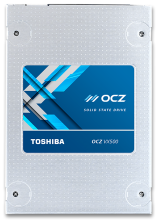 Today, CDRLabs brings you a review of Toshiba's new OCZ VX500 SSD. Aimed at mainstream desktop and notebook users, this mid-range SSD is designed to deliver an excellent balance of performance, endurance, value and features. The VX500 is powered by Toshiba's own TC358790 controller and is available with up to 1TB of the company's 15nm MLC NAND flash. This combination not only provides excellent performance, it delivers over 3x the endurance of TLC-based SSDs, making it suitable for write-intensive applications.
Today, CDRLabs brings you a review of Toshiba's new OCZ VX500 SSD. Aimed at mainstream desktop and notebook users, this mid-range SSD is designed to deliver an excellent balance of performance, endurance, value and features. The VX500 is powered by Toshiba's own TC358790 controller and is available with up to 1TB of the company's 15nm MLC NAND flash. This combination not only provides excellent performance, it delivers over 3x the endurance of TLC-based SSDs, making it suitable for write-intensive applications.
- Details
- HDD/SSD
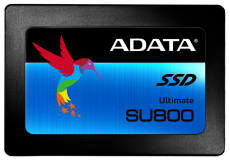 CDRLabs has taken an in depth look ADATA's new Ultimate SU800 SSD. Designed for use in ultrabooks, notebooks, and desktops, this mid-range SSD is powered by Silicon Motion's new SM2258 controller and is the first drive from ADATA to come equipped with 3D TLC NAND flash. The SU800 also features intelligent SLC caching and a DRAM cache buffer to boost performance up to 560MB/s read and 520MB/s write, with LDPC error correction, Data Shaping, and a RAID Engine to bolster data integrity. To top it off, the SU800 supports DEVSLP (Device Sleep) technology, which extends the battery life of a device by reducing the drive's power consumption when it is idle.
CDRLabs has taken an in depth look ADATA's new Ultimate SU800 SSD. Designed for use in ultrabooks, notebooks, and desktops, this mid-range SSD is powered by Silicon Motion's new SM2258 controller and is the first drive from ADATA to come equipped with 3D TLC NAND flash. The SU800 also features intelligent SLC caching and a DRAM cache buffer to boost performance up to 560MB/s read and 520MB/s write, with LDPC error correction, Data Shaping, and a RAID Engine to bolster data integrity. To top it off, the SU800 supports DEVSLP (Device Sleep) technology, which extends the battery life of a device by reducing the drive's power consumption when it is idle.
- Details
- HDD/SSD
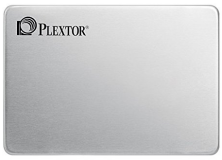 CDRLabs kicks off the week with a review of Plextor's new S2C solid state drive. Targeted towards first time upgraders and do-it-yourselfers, this successor to the M7V is powered by SMI's SM2258 controller and is available with up to 512GB of SK Hynix's 16nm TLC NAND flash. To compensate for the slow write speeds typically associated with TLC NAND, the S2C is equipped with Plextor's PlexNitro cache acceleration technology, which optimizes performance without taking up any space on the drive. The S2C also has many of the same features found on Plextor's higher end SSDs. In addition to the company's PlexTurbo intelligent RAM caching solution, the drive offers support for its PlexCompressor and PlexVault technologies.
CDRLabs kicks off the week with a review of Plextor's new S2C solid state drive. Targeted towards first time upgraders and do-it-yourselfers, this successor to the M7V is powered by SMI's SM2258 controller and is available with up to 512GB of SK Hynix's 16nm TLC NAND flash. To compensate for the slow write speeds typically associated with TLC NAND, the S2C is equipped with Plextor's PlexNitro cache acceleration technology, which optimizes performance without taking up any space on the drive. The S2C also has many of the same features found on Plextor's higher end SSDs. In addition to the company's PlexTurbo intelligent RAM caching solution, the drive offers support for its PlexCompressor and PlexVault technologies.
- Details
- HDD/SSD
 Today, CDRLabs brings you a review of Crucial's new MX300 M.2 SSD. Designed for tablets and ultrabooks, this new addition to the MX300 line isn't much larger than a stick of gum. The drive is powered by Marvell's 88SS1074B1 controller and is available with up to 1050GB of Micron's 3D TLC NAND. The MX300 M.2 also shares many of the same features as its full size counterpart. In addition to Crucial's Dynamic Write Acceleration technology, it offers AES 256-bit encryption, thermal and power loss protection, TRIM support and active garbage collection. The MX300 M.2 also uses technologies like Data Defense and Redundant Array of Independent NAND (RAIN) to increase security and protection of data to a level that’s not typically found in consumer-class SSDs.
Today, CDRLabs brings you a review of Crucial's new MX300 M.2 SSD. Designed for tablets and ultrabooks, this new addition to the MX300 line isn't much larger than a stick of gum. The drive is powered by Marvell's 88SS1074B1 controller and is available with up to 1050GB of Micron's 3D TLC NAND. The MX300 M.2 also shares many of the same features as its full size counterpart. In addition to Crucial's Dynamic Write Acceleration technology, it offers AES 256-bit encryption, thermal and power loss protection, TRIM support and active garbage collection. The MX300 M.2 also uses technologies like Data Defense and Redundant Array of Independent NAND (RAIN) to increase security and protection of data to a level that’s not typically found in consumer-class SSDs.
- Details
- HDD/SSD
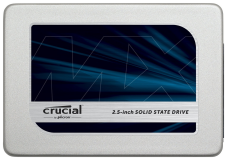 CDRLabs kicks off the week with a review of Crucial's new MX300 solid state drive. Powered by Marvell's 88SS1074B1 controller and available with up to 1050GB of Micron's 3D TLC NAND, this new mainstream SSD delivers 530MB/s read and 510MB/s write speeds for faster boot times, quicker application launches and better overall system performance. The MX300 also offers a long list of features including AES 256-bit encryption, thermal and power loss protection, TRIM support and active garbage collection. It also comes equipped with Crucial's Dyamic Write Acceleration technology, which uses an adaptable pool of high speed, single-level cell flash memory to enable faster saves and file transfers.
CDRLabs kicks off the week with a review of Crucial's new MX300 solid state drive. Powered by Marvell's 88SS1074B1 controller and available with up to 1050GB of Micron's 3D TLC NAND, this new mainstream SSD delivers 530MB/s read and 510MB/s write speeds for faster boot times, quicker application launches and better overall system performance. The MX300 also offers a long list of features including AES 256-bit encryption, thermal and power loss protection, TRIM support and active garbage collection. It also comes equipped with Crucial's Dyamic Write Acceleration technology, which uses an adaptable pool of high speed, single-level cell flash memory to enable faster saves and file transfers.
- Details
- HDD/SSD
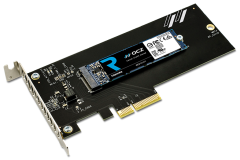 CDRLabs has taken an in depth look Toshiba's new OCZ RD400 SSD. Designed with enthusiasts and hard-core gamers in mind, the RD400 is the company's first consumer-ready Non-Volatile Memory Express (NVMe) SSD. This NVMe 1.1 compliant, M.2 form factor drive is powered by Toshiba's TC58NCP070GSB controller and is available with up to 1TB of their 15nm MLC NAND flash. With its PCIe Gen3 x4 lane interface, the RD400 also shatters the traditional SATA bottleneck by delivering over four times the performance of SATA SSDs.
CDRLabs has taken an in depth look Toshiba's new OCZ RD400 SSD. Designed with enthusiasts and hard-core gamers in mind, the RD400 is the company's first consumer-ready Non-Volatile Memory Express (NVMe) SSD. This NVMe 1.1 compliant, M.2 form factor drive is powered by Toshiba's TC58NCP070GSB controller and is available with up to 1TB of their 15nm MLC NAND flash. With its PCIe Gen3 x4 lane interface, the RD400 also shatters the traditional SATA bottleneck by delivering over four times the performance of SATA SSDs.
- Details
- HDD/SSD
 Today, CDRLabs brings you a review of Plextor's first TLC NAND-based SSD, the M7V. Designed to meet the needs of cost-conscious consumers, this new entry-level SSD is powered by Marvell's 88SS1074B1 controller and is available with up to 512GB of Toshiba's 15nm TLC NAND flash. To overcome the technical limits of TLC NAND, the M7V is equipped with Plextor's new PlexNitro cache acceleration technology, which optimizes performance without taking up any space on the drive. The M7V also has many of the same features found on Plextor's higher end SSDs. In addition to the company's PlexTurbo SSD RAM caching solution, the drive offers support for its PlexCompressor and PlexVault technologies.
Today, CDRLabs brings you a review of Plextor's first TLC NAND-based SSD, the M7V. Designed to meet the needs of cost-conscious consumers, this new entry-level SSD is powered by Marvell's 88SS1074B1 controller and is available with up to 512GB of Toshiba's 15nm TLC NAND flash. To overcome the technical limits of TLC NAND, the M7V is equipped with Plextor's new PlexNitro cache acceleration technology, which optimizes performance without taking up any space on the drive. The M7V also has many of the same features found on Plextor's higher end SSDs. In addition to the company's PlexTurbo SSD RAM caching solution, the drive offers support for its PlexCompressor and PlexVault technologies.
- Details
- Other
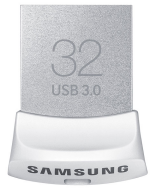 CDRLabs has taken a long overdue look at Samsung's FIT USB 3.0 flash drive. Designed for use in ultra-slim notebooks and automobiles equipped with USB ports, the FIT allows great portability and maintains streamlined edges of devices while providing an easy grip for removal. The drive's metal-based design also protects your data against water, shock, temp, magnets, and X-rays. To top it all off, the FIT offers sequential read speeds of up to 130MB/s, allowing users to transfer a 2.4GB full HD video or approximately 40 hours of MP3 music in less than 20 seconds.
CDRLabs has taken a long overdue look at Samsung's FIT USB 3.0 flash drive. Designed for use in ultra-slim notebooks and automobiles equipped with USB ports, the FIT allows great portability and maintains streamlined edges of devices while providing an easy grip for removal. The drive's metal-based design also protects your data against water, shock, temp, magnets, and X-rays. To top it all off, the FIT offers sequential read speeds of up to 130MB/s, allowing users to transfer a 2.4GB full HD video or approximately 40 hours of MP3 music in less than 20 seconds.

